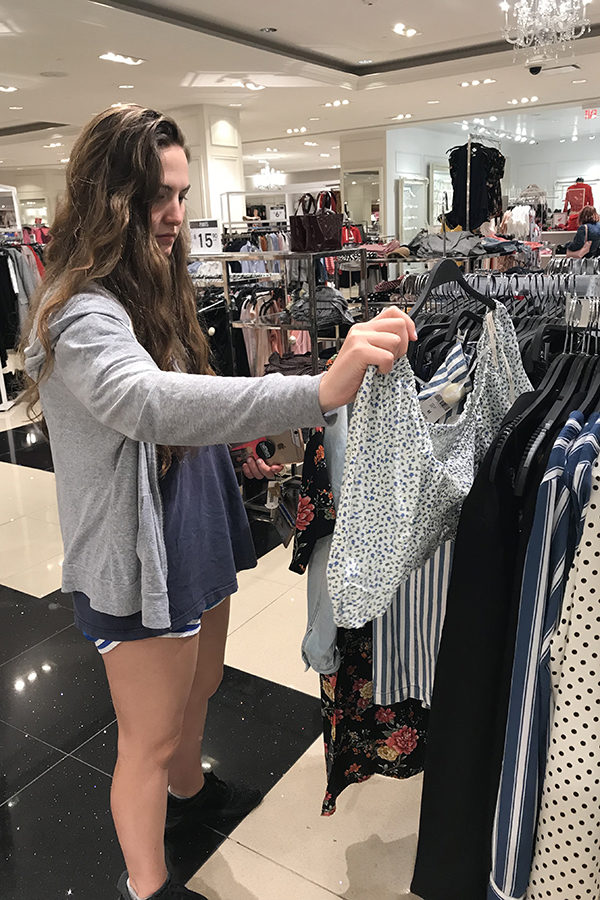Students Discuss Environmental Friendly Clothing Options
Nearly everyone is taught while growing up to “reduce, reuse, and recycle.” People may think that recycling is simply throwing paper and plastic into big green bins, but it encompasses much more.
Shoppers don’t realize how much waste is created in the making of clothes. From the pesticides used in farming the cotton to the exhaust created from the delivery trucks, making clothes is an overlooked eco-destructive process. The infinite cycle of pursuing the newest designs causes people to turn a blind eye to just how much waste is created. On average, 68 pounds of clothing and textiles are thrown out per person every year.
One way to reduce waste is thrifting. Thrift shopping is buying second hand clothes, usually at a reduced price. There are chain thrift stores like Goodwill and Salvation Army where you can donate and buy clothing items, but there are also higher end thrift stores where you can find top quality vintage items.
Junior Hayden Wickliffe tries to stay up-to-date with fashion trends while staying eco-friendly.
“I try to be mindful of the clothes I buy because I know that there is so much waste going into the making of them,” Hayden said. “It’s really hard sometimes because the trends that everyone wears change too much, and the companies that are environmentally aware are usually more expensive.”
Senior Brandon Chang confesses that he usually doesn’t ever consider the waste produced.
“I know that I should be more aware of what goes into the making of the clothes I wear, but I usually just buy the clothes that I like,” Brandon said. “I’m pretty good about recycling, but when it comes to clothes I don’t pay much attention to the making of them.”
The unknown waste produced by the clothing industry is rarely advertised, and many people don’t even notice the amount of damage it does the environment. Substituting new clothes with thrifted items coupled with researching companies that have recycle programs reduces more waste than people may think.









